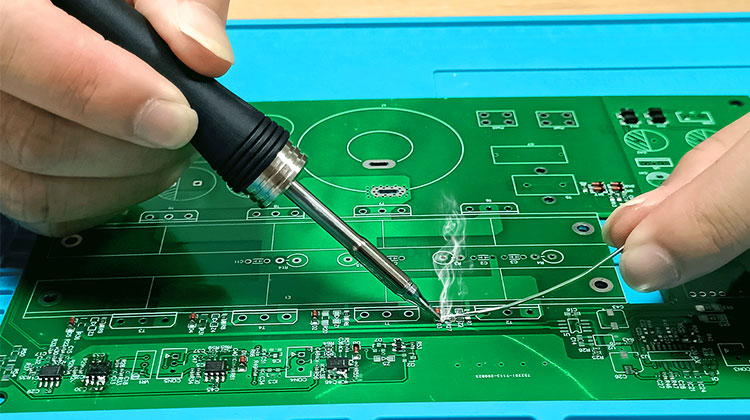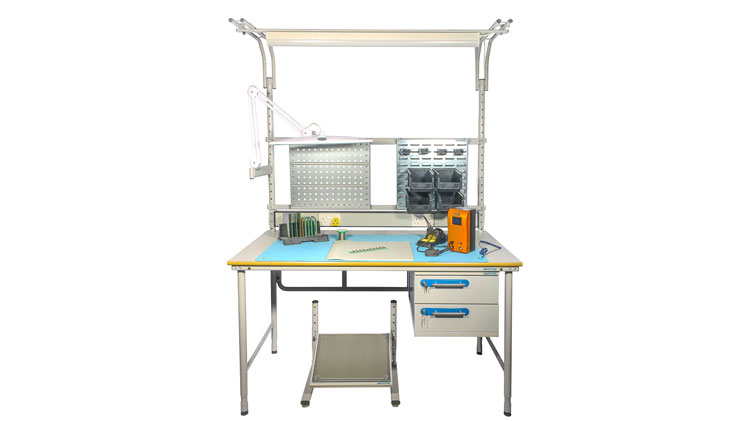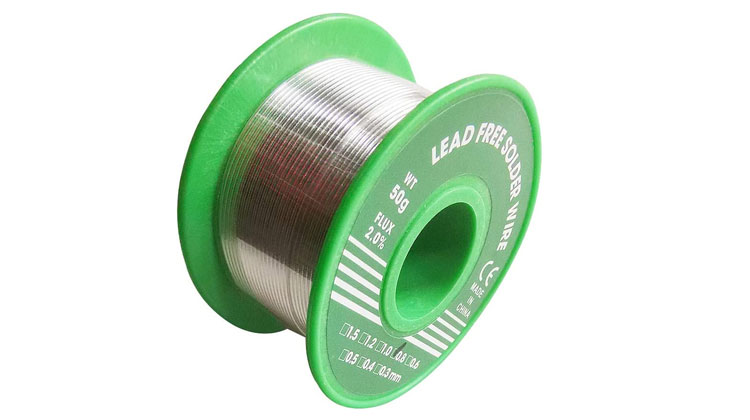Soldering is a common process in the electronics industry that involves using a soldering iron or soldering torch to melt and join together two or more metal components. While soldering can be a useful and effective way to connect electronic components, it is important to be aware of the potential dangers associated with this process, including the risk of inhaling lead.

Lead is a heavy metal commonly used in manufacturing electronic components, such as printed circuit boards and electronic connectors. When these components are heated during the soldering process, the lead can vaporize and release fumes into the air. Inhaling these fumes can be harmful to your health, as lead can accumulate in the body and cause a range of health problems.
One of the most common symptoms of lead poisoning is abdominal pain and cramping. Still, it can cause many other health problems, including brain damage, muscle weakness, and reproductive disorders. In severe cases, lead poisoning can be fatal.
Therefore, it is important to take precautions to avoid inhaling lead when soldering. One of the most effective ways to do this is to work in a well-ventilated area, as this can help to dissipate the fumes and reduce the risk of inhaling lead. Additionally, it is important to use a soldering iron or soldering torch that is designed to minimize the release of fumes, as well as other protective equipment, such as a fume extractor or ventilation hood.

It is also important to use lead-free solder whenever possible. Lead-free solder is made from a mixture of tin and other metals, such as copper and silver, and does not contain lead. While it may be more expensive than lead-based solder, it is a safer option, as it does not produce harmful fumes when heated.

Simply speaking, it is possible to inhale lead when soldering, especially if proper precautions are not taken. To avoid this risk, it is important to work in a well-ventilated area, use a soldering iron or soldering torch that minimizes the release of fumes, and use lead-free solder whenever possible. By taking these steps, you can protect yourself from the potential dangers of inhaling lead when soldering.
In addition to the steps outlined above, you can do a few other things to reduce the risk of inhaling lead when soldering. For example, it is a good idea to take regular breaks to allow your body to recover from exposure to the fumes. This can help to reduce the amount of lead that accumulates in your body over time.
Another important step is to avoid touching the soldered joints with your bare hands. Lead can be absorbed through the skin, so it is important to wear gloves when handling soldered components. This will help to prevent lead from entering your body through your hands.
It is also a good idea to wash your hands thoroughly after soldering, as this can help to remove any lead that may have come into contact with your skin. This is particularly important if you have been handling lead-based solder, as it can contain higher levels of lead than lead-free solder.
In addition to taking these steps to protect yourself, it is also important to educate others about the risks of inhaling lead when soldering. This is particularly important for those who may not be aware of the potential dangers, such as hobbyists and beginners who are just starting to learn about soldering. By sharing this information, you can help to keep others safe and prevent them from experiencing the harmful effects of inhaling lead.
In conclusion, inhaling lead when soldering can be dangerous and lead to various health problems. By taking proper precautions, such as working in a well-ventilated area, using a fume extractor or ventilation hood, and using lead-free solder, you can reduce the risk of inhaling lead and protect yourself and others from the harmful effects of this heavy metal.
Contact: Mr. Li
Phone: (0086) 138 24254 321
E-mail: atetool@atetool.com.cn
Add: 5F, 1-2# Building, Tongfuyu Industrial Zone, Aiqun Rd, Shiyan Subdistrict, Bao'an, Shenzhen, 518108, China